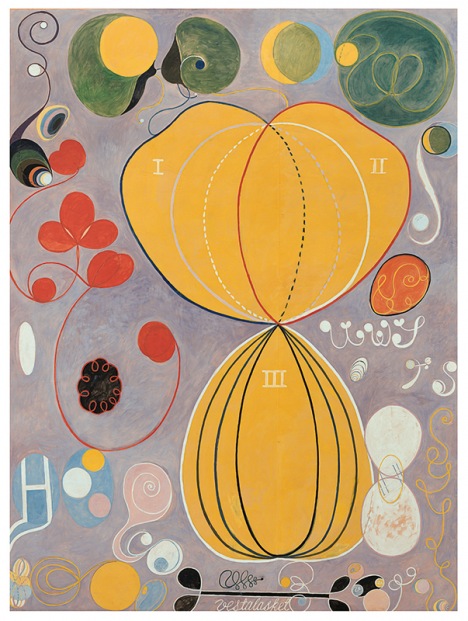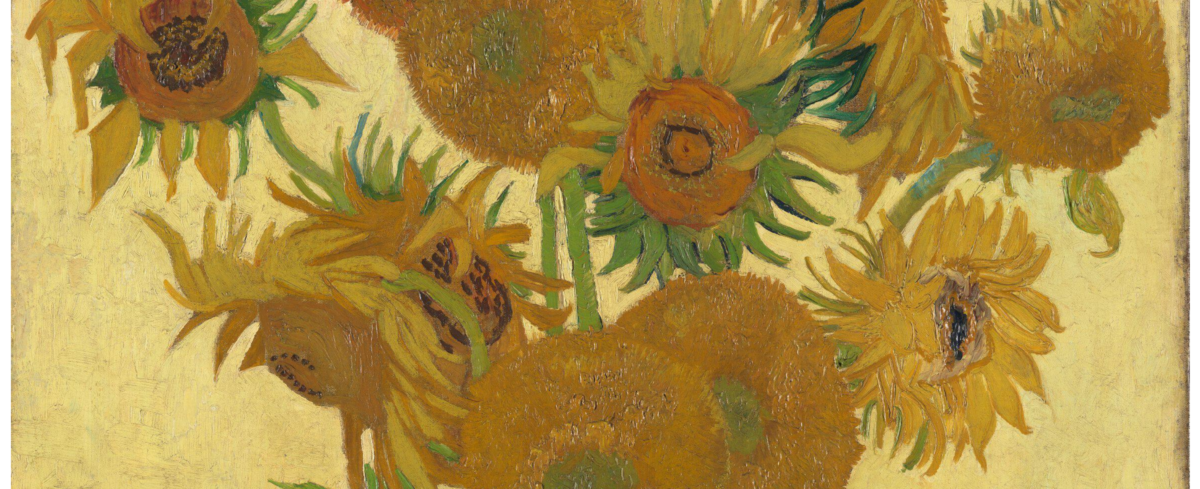Art Peritus recently sat down with Katja Zigerlig, Vice President, Art, Wine and Collectibles Advisory at Berkley One, a Berkley Company (WRB) to discuss the nuances of collecting and insuring Fine Art. Katja consults with collectors as well as insurance and financial advisors on the physical and financial protection of their passion investments. Brooke Mellen, a Former Risk Manager at Sotheby’s who now runs Cultured Forest chatted with Katja about New Year’s resolutions in relation to art collecting.
BLM: Have you made any personal art-related resolutions this year?
KZ: I’m a fan of Hilma af Klint, a Swedish artist who had a popular retrospective at the Guggenheim Museum in 2019. I received her biography as a present recently, and I’m intrigued to visit the Goetheanum in Dornach, Switzerland this summer. It is a structure built by Rudolf Steiner, and home to the Anthroposophical Society, which drew artists both for the architecture and the philosophy.
BLM: That sounds like an intriguing art destination. On the practical front, are there any resolutions you are making for 2023?
KZ: To dust my books and the tops of frames more frequently! I live in NY, and it’s astounding how dust gets into a home despite closed windows and the use of air filters. Sometimes the particles are not even visible, but then they appear on the dust-cloth. It’s so important to minimize gradual deterioration from environmental factors.
B: Do you discuss this kind of art collection care with your clients?
K: (laughs) Ah, yes, that can be a delicate conversation. The most common discussions are usually around installation and ongoing care and cleaning, like the dusting. First, always use weight rated hooks and use at least two hooks, unless the artwork is, well, tiny! I have seen mirrors and framed works fall off walls because the hooks weren’t able to support the weight. Also, I recommend hiring an art installer for larger works and/or works suspended from the ceiling.
If you have delicate artwork in your home, be sure to alert guests and household staff. I’ve seen martini glasses placed on a Donald Judd sculpture by unaware party guests. Be sure to give specific instructions about the art not to touch/clean. We’ve seen instances of household help accidentally damaging works of art because they don’t know it is art, or were not aware how fragile an artwork is. A sculpture shouldn’t be cleaned with all-purpose cleaning spray, for example.
B: Should updated appraisals be a resolution for collectors?
K: Certainly, especially if they haven’t had an updated appraisal in 5 years and/or they are collecting in a genre or an artist in which there has been a lot of market fluctuation, such as women Abstract Expressionists, contemporary Black artists, just to name a few general areas. You know how much money you have in your account, so why wouldn’t you want to know the current value of your passion investments? And I use the word investment broadly – an investment of time, money, space and intention.
Appraisals are important not only to make certain you are appropriately insured, but it can also help you make smart decisions about charitable donations, gifts to family members or making the decision to sell the work. It’s one of the most important documents a collector can have, along with purchase invoices, and an insurance policy of course.
It’s also important to use a professional appraiser, like the staff at Art Peritus. I mention this because in my more than 20 years in this business I have seen appraisals by people who are not qualified. They don’t have the correct credentials. There is not enough information. In one case, a person lied about their qualifications. These types of valuations are not accepted.
B: Ah, so you take appraisals very seriously!
K: Yes indeed. Every insurance company has a different threshold for the value documentation they would like to see. When requesting insurance for your valuable collectibles, whether art, collectibles or jewelry, you should always have proof of value. Most often this is the invoice from where you purchased the item. If the item has increased in value, an updated appraisal validates the increased value. And a “qualified appraiser” is key.
B: When considering insurance, what is the difference between Blanket and Scheduled insurance coverage for collectibles?
K: Scheduled coverage separately describes individual collectibles to be insured at a specific value. Blanket coverage is based off of a blanket value that covers multiple collectibles, and is often used to cover lower-priced valuables. While there can still be a maximum limit per item, each piece of artwork or collectibles is not scheduled separately.
A collector should also be aware that when an insured has blanket coverage, in the event of a loss, descriptions and valuation will need to be established. That process could be complicated where the loss event also resulted in the loss of the documentation of the items’ descriptions and values, as insureds are usually required to demonstrate proof the item had been in their possession before the loss. An independent agent is a great resource for advice on whether scheduled or blanket coverage makes sense for a specific collection.
Collectors interested in learning more about coverage generally can also check out various collections related articles at the Berkley One blog here.
B: Speaking of Art Insurance, any general advice for collectors?
K: Purchase the right amount of insurance with a reputable, financially strong insurance provider that understands fine art insurance, including the claims that typically occur. An insurance provider like Berkley One has deep experience in collections, as well as experts within the company who are collectors themselves and can consult with and assist clients throughout the full cycle of the policy—from adding a new valued piece of artwork, to life events like moving or shipping, and more.
B: What sets Berkley One apart from the average insurer?
K: Having arts expertise on staff is a key differentiator. I can tell you what it is like not to have someone like that on staff. Many years ago when I was renting an apartment, I insured my art with a direct writer (editor’s note: a direct writer is a carrier that does not sell insurance through independent agents). I had purchased an artwork from a gallery in San Francisco, shipped it to my apartment, and requested insurance. I submitted the invoice, bill of lading, and proof it had been delivered as well as a photograph of the art hanging on my wall. The insurance representative insisted on coming out to my apartment to inspect the painting in person to make sure it was what I said it was. After that I immediately switched my insurance company. Imagine going through such a process when adding any item worth more than $1,000, even though I had provided more than enough documentation supporting the purchase.
I’m not the only expert on staff, of course. I have colleagues with expertise in jewelry, boats, yachts, and classic cars, as well as engineers and risk managers. Subject matter expertise is so valuable, and helps provide peace of mind.
B: In keeping with our new year’s themes, are there any exhibits you are excited to see this year?
K: I just saw the Meret Oppenheim retrospective at MoMA. The survey of this important Surrealist artist was postponed by Covid, so I was so happy to finally get to see it! She worked in so many mediums: drawing, painting, theater, sculpture, and also made jewelry. Her persistent need to create is inspiring. MoMA had purchased Oppenheim’s famous Fur Teacup sculpture back in 1936 – it was the first work by a Surrealist artist, so it’s especially poignant to see a large selection of her work at the first American institution that collected her.
B: Thanks so much for your time, Katja. This inside look into the art industry has been so insightful! Where can readers go to learn more about both you and Berkley One?
K: Of course! Readers can learn more about about Berkley One via our LinkedIn found here or via our website berkleyone.com Additionally, I can be reached via LinkedIn here.


